The 1974 Pekin Sesquicentennial volume devotes four paragraphs to the story of what was then known as the First National Bank and Trust Company of Pekin, which by 1974 had been operating for 87 years, having been founded in 1887 as the German-American National Bank.
The Sesquicentennial account of the bank’s history can be greatly augmented with records and resources in the Pekin Public Library’s Local History collection, but we’ll begin with the Sesquicentennial’s first paragraph:
“The oldest of Pekin’s present banks opened its doors on Wednesday, August 10, 1887 with $100,000 in capital, doing business from one room of a building owned by a Mrs. Margaret Keller on the corner of Court and Fourth Streets. The first officers of the then-German American National Bank were E. W. Wilson, a former Pekin mayor and one of the controlling powers in the American Distillery, president; Henry Feltman, a lumber dealer, vice-president; and A. H. Purdie, cashier. Deposits at the end of the first day of business amounted to $7,273.07.”



The 1885 Sanborn Fire Insurance Map of Pekin shows that the Keller building was under construction that year. In addition to the new bank in the western half of the building, the Albertsen & Koch Furniture Store was the first occupant of the eastern half. Both the bank and Albertsen’s would later move further east in the 400 block of Court Street.
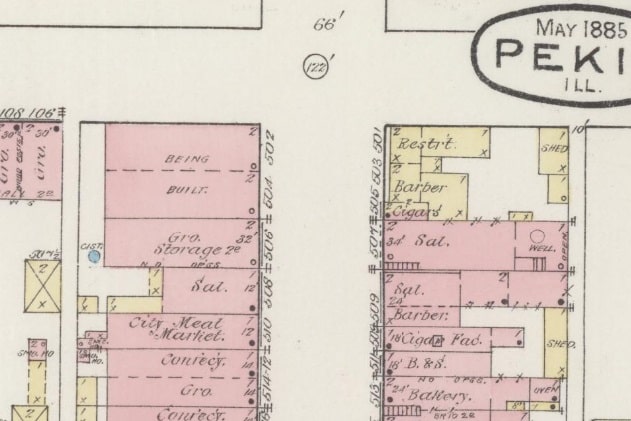
While the Sesquicentennial’s story of the bank’s founding is quite informative, it does have one thing wrong: Feltman, not Wilson, was the bank’s first president, and Wilson was the first vice-president. Wilson did become the bank’s president later, though. Also, while Wilson was indeed a “former” Pekin mayor from the vantage point of 1974, at the time of the bank’s founding it would be another six years before Wilson would become Pekin mayor.
The 1887 Bates City Directory of Pekin featured a full-page advertisement for the newly opened German-American National Bank. Because a very large part of Pekin’s population (if not the majority) then spoke German as their mother tongue, the bank catered especially to German immigrants and their families – so the advertisement was run in both English and German. The ad lists the bank’s officers as Henry Feltman, president, E. W. Wilson, vice-president, Alexander H. Purdie, cashier, and Henry F. Smith, teller. Besides Feltman, Wilson, and Purdie, the board of directors then included George Lucas, Arend Behrens, Jonathan Merriam, and Joseph P. Ropp.
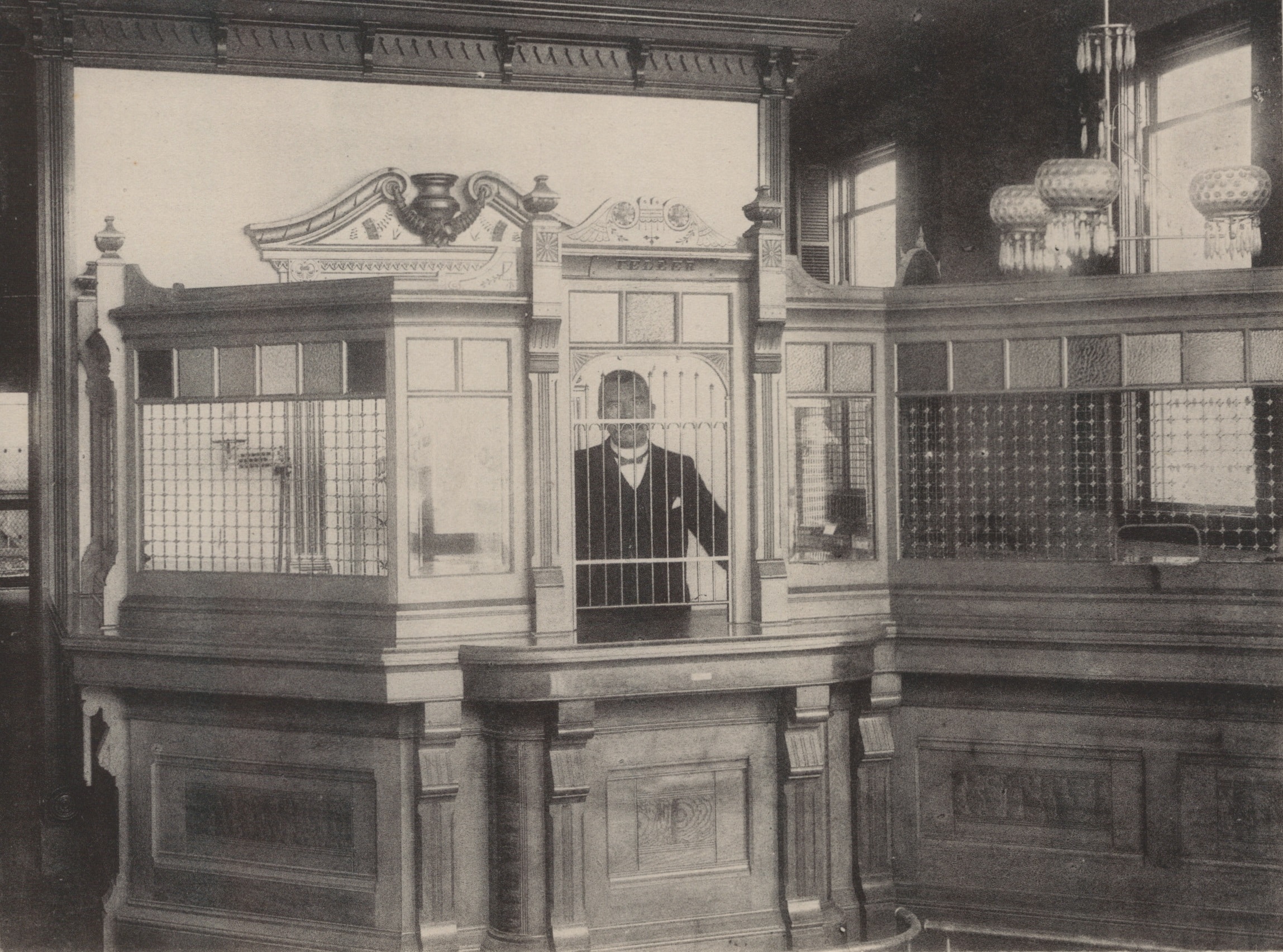
The founding president, Henry Feltman (1828-1906), was an immigrant from Westphalia in the Kingdom of Prussia. Sadly, he ended his days at George Zeller’s Illinois Asylum for the Incurably Insane in Bartonville, where he died of arteriosclerosis and an infected right arm. (Note: In those days, not all asylum residents were insane — this and similar hospitals also could function as a kind of nursing home before proper nursing homes were established.) He is buried in Springdale Cemetery in Peoria.
The Sesquicentennial account continues with three sentences that cover nearly seven decades of the bank’s history:
“With new growth each day, the small quarters at Fourth and Court soon became inadequate, and so in 1916, the bank moved into its present location in the middle of the 400 block of Court Street. Additions to the west were made in 1951 and to the east in 1960. The name was changed to the American National Bank of Pekin in 1918 and to the present title of The First National Bank and Trust Company of Pekin in 1956.”


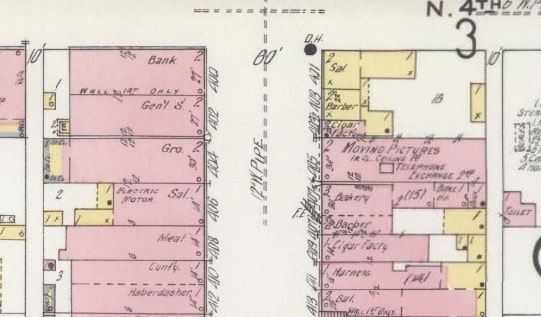





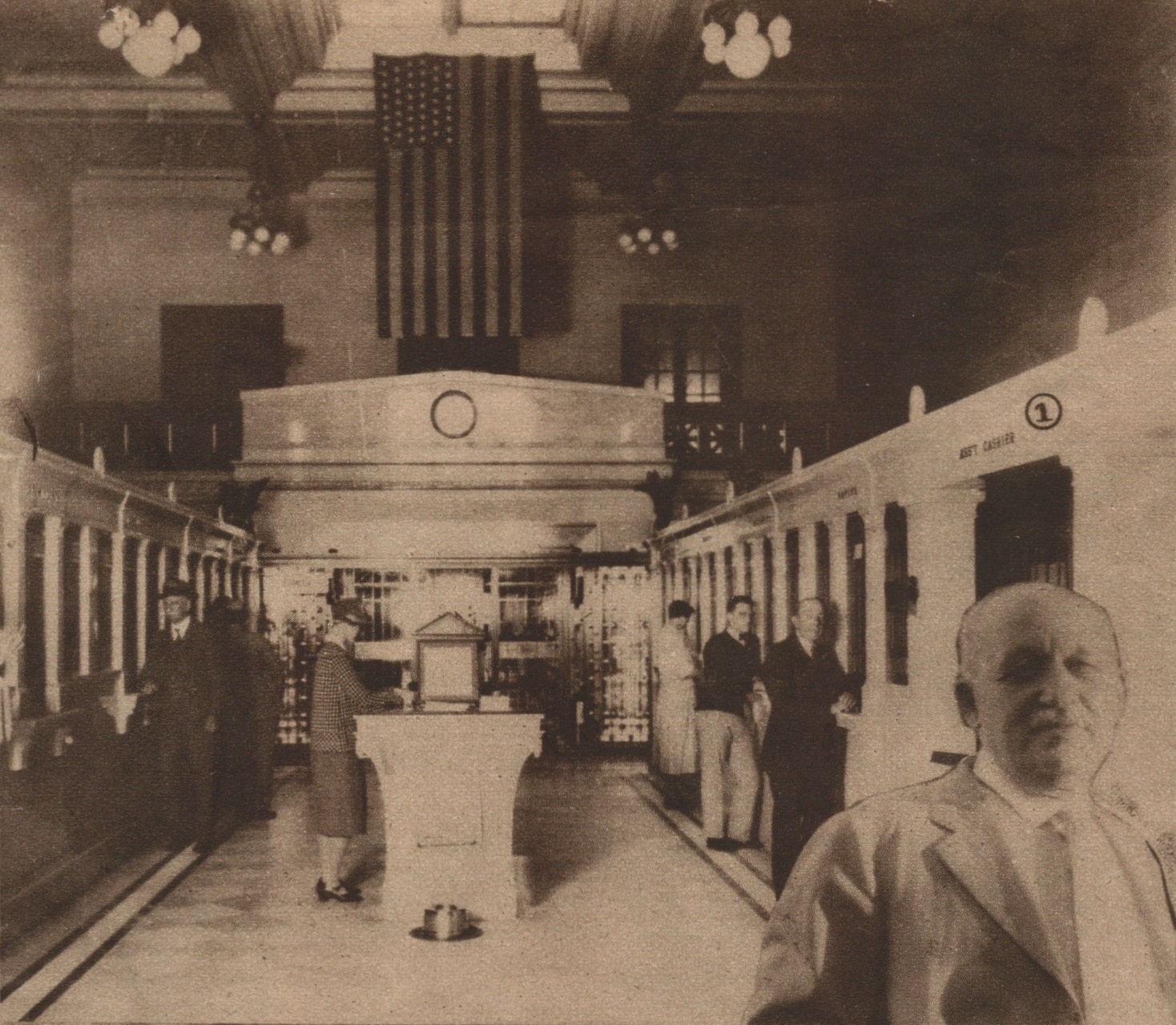





The decision in 1918 to drop “German” from the bank’s name was due to the widespread hatred of Germans and Germany that had been stoked during World War I. That was the period when Pekin’s businesses took down their “German spoken here” signs.
Despite the 1956 renaming, this bank was in fact not the “first” First National Bank of Pekin. Before the German-American National Bank was ever founded, Pekin already had a “First National Bank.” That earlier firm, unrelated to the later bank, operated in Pekin from 1866 to 1875 under the presidency of Pekin mayor Isaac E. Leonard.
As for the 1960 addition on the east of the bank building, it was about that time that the bank’s impressive Neo-Classical exterior was covered over by the blue and white steel casing that remains on the building to the present day.

The Sesquicentennial account next tells of three notable developments at the bank:
“In 1927 trust powers were conferred upon the bank, and, at about the same time, safety deposit boxes were added to the institution’s services. First National opened Pekin’s first separate auto-banking facility in early 1959.”
It was from 1927 onward, then, that the bank was able to add “and Trust Company” to their name. A Peoria Transcript report in October that year says the bank then had resources valued at more than $2.6 million. The bank’s president at the time was Henry M. Ehrlicher (1860-1940).
Regarding the auto-banking facility, Pekin’s first automobile drive-up teller in Pekin, the 1st Auto Bank, opened on Monday, 16 Feb. 1959 – the dawn of the era of drive-up banking in Pekin. The facility was in a lot adjacent to First National Bank. With teller windows on each side, the drive-up facility could accommodate four cars at a time, and also had a sidewalk teller window at the front.




The Sesquicentennial account concludes:
“Today, the bank is still growing. The most significant expansion in recent years will be the construction of a new, multi-story bank building located on Ann Eliza and North Sixth Streets. President William E. Troutman announced the plans in 1973, and construction is presently underway.”
It was on Wednesday, 18 April 1973, that the bank’s shareholders approved the borrowing of $1 million in subordinated capital debentures and authorized the directors to relocate the main banking house to the block bordered by Margaret, Fifth, Ann Eliza, and Sixth streets and to proceed with a new building at that location.
The president’s report from that meeting said the bank then had $31,592,387 in assets, with liabilities consisting of $12.7 million of demand deposits and $15.5 million of time deposits.
The 1975 Pekin city directory is the last directory that shows First National Bank and Trust Company at 418 Court St. That year, the bank moved to its new building, which the 1976 directory lists with an address at 500 Ann Eliza St. The 1977 directory and all subsequent directories give the address as 111 N. Sixth St. Not long after, First National Bank opened a branch at Vogel’s Market Square.

Meanwhile, in August of 1977 the bank’s old 1916 structure was bought for $425,000 by the Tazewell County board, which renamed it The Tazewell Building. The county remodeled the interior and until recently used the building for county offices. As it has begun to show signs of age, the county has moved all staff from the structure but still stores some county records there.
First National Bank and Trust Company last appears in Pekin directories in 1986, because the bank changed its name to AMCORE Bank National Association on 8 Aug 1986. The last time AMCORE Bank in downtown Pekin appears in Pekin city directories is in 1992, when the bank’s 105-year history drew to its close. AMCORE was merged into Commerce Bank of Peoria on 1 Dec. 1992, after which banking operations under the original 1887 charter ceased. (Interestingly, the 1993 directory still mentions AMCORE’s branch and the trust company, but AMCORE’s main building at 111 N. Sixth St. does not appear.)
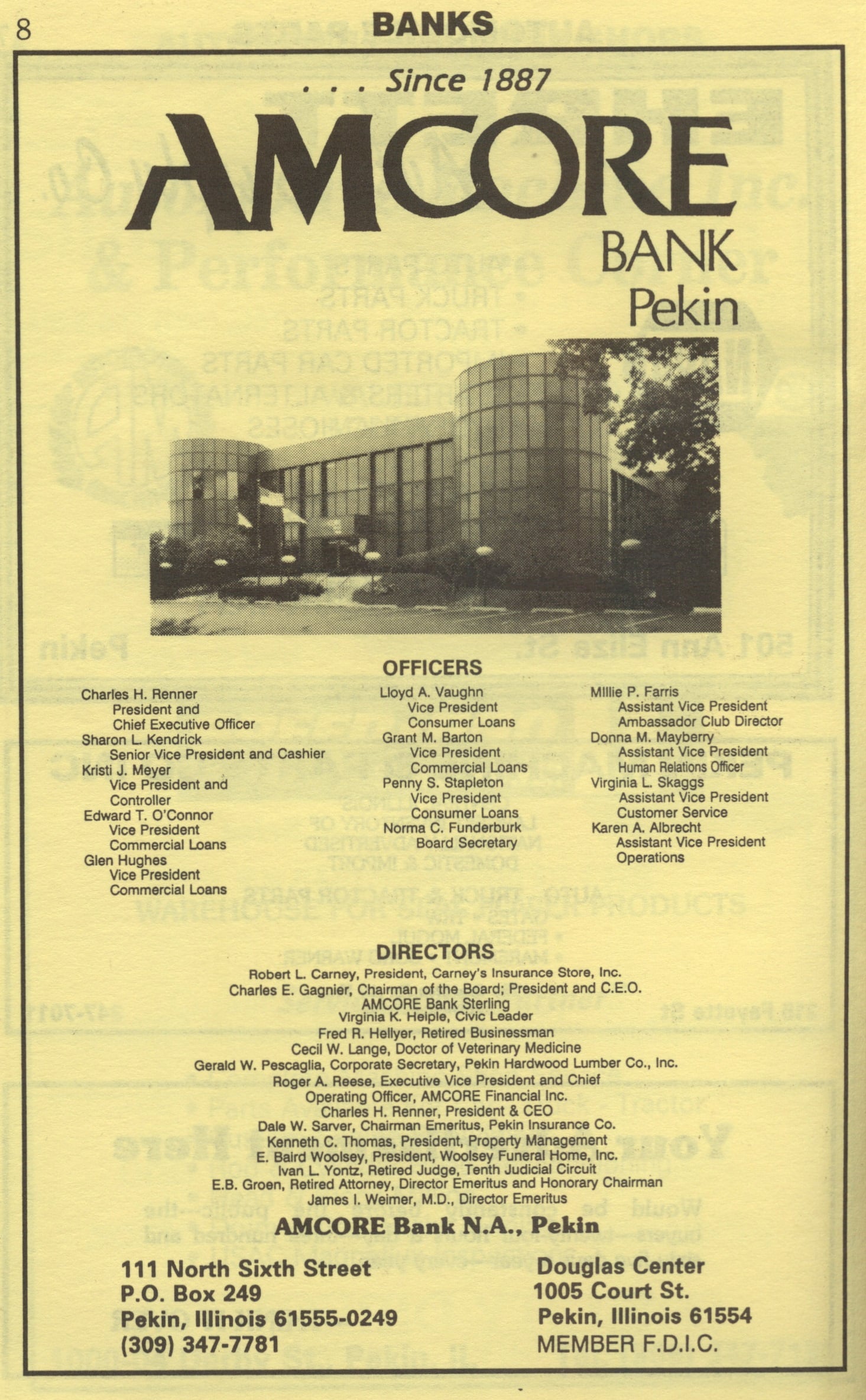
After the 1992 merger, Commerce Bank continued to operate from the former AMCORE/First National Bank building at 111 N. Sixth St. for several more years. In 2006, Commerce sold the building for $1.4 million to the Süd Family Limited Partnership, the commercial real estate venture of the Bloomington-Normal based Süd automobile dealership company. Since then, the former bank has borne the name “The Süd Building.”










